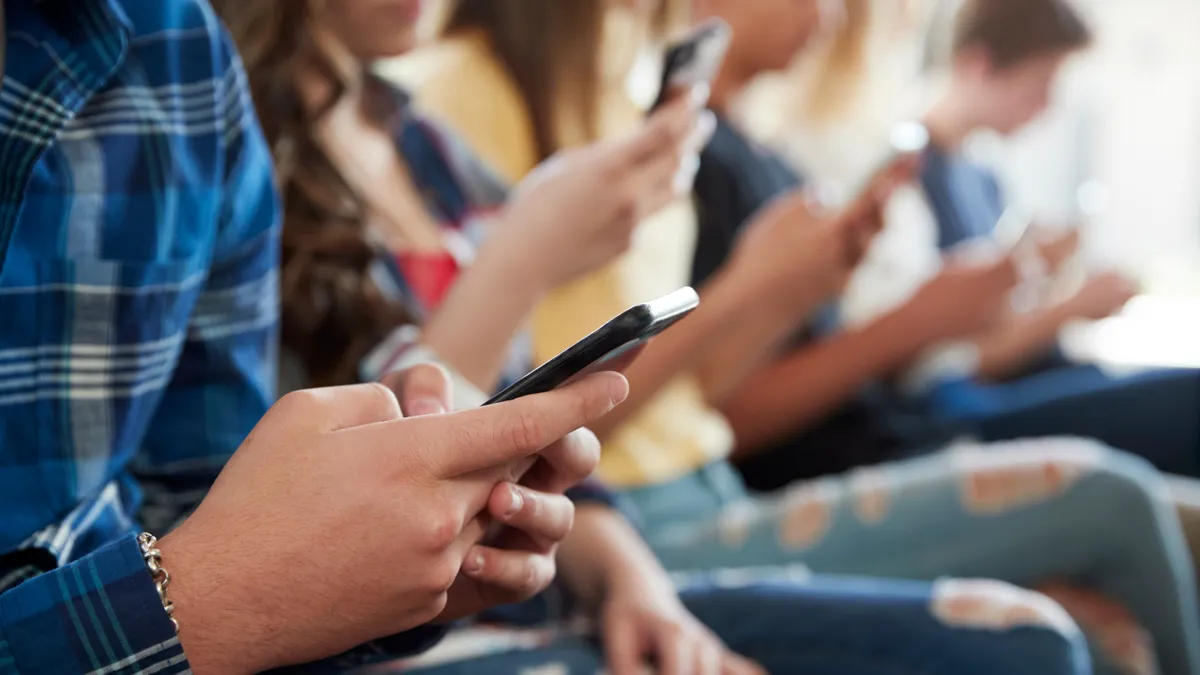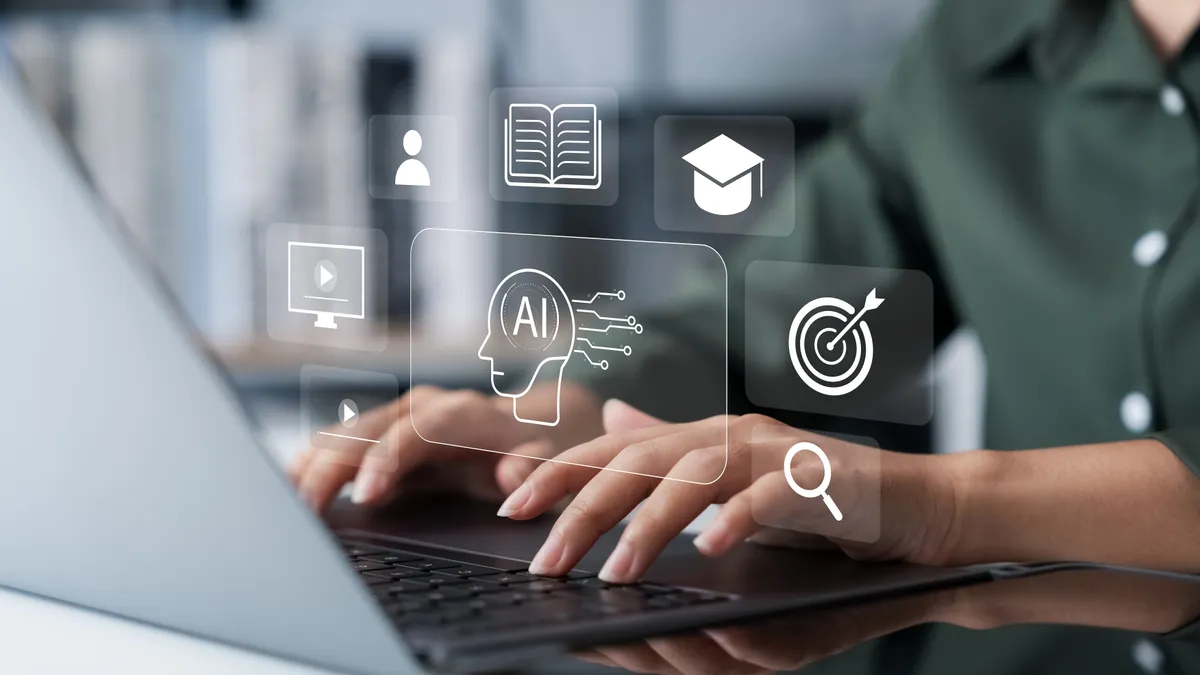Constantly checking for messages. Watching videos and showing them to fellow students. Playing games. Video chatting with students in other classrooms or not in school. Videotaping students and teachers. Getting into peer conflict through texting and social media.
Math teacher Melissa Campbell says there’s a host of negative behaviors associated with students bringing cell phones into the classroom, which in turn affects academic performance.
“Some (students) are compliant and keep them put away. But the number of students who refuse is increasing, and it is becoming a huge power struggle. They are truly addicted, and many choose that over doing any school work,” said Campbell, union president for United Educators of Pittsfield in Massachusetts.
“Failure rates are increasing due to students just not doing any work. Their attention spans are decreasing due to the constant screen time and need for constant stimulation.”
Other educators echoed those words and also pointed to the deleterious effect of cell phones on social-emotional learning.
“Coming out of the pandemic, we have seen a substantial increase in poor behaviors regarding cell phones and social media. We have also seen a drastic increase in behaviors that appear to be an addiction to these devices,” said Kris Hagel, executive director of digital learning for Peninsula School District in Washington.
David Hurst, deputy superintendent for Bethlehem Central School District in New York, said cell phones have caused students to lose the ability to interact with each other in school.
“Rather than walking down the hall with a friend and talking, they are walking with their heads in their phone,” Hurst said. “If four students are sitting together at lunch, all four have their phones out, and there is no communication whatsoever.”
Katherine Holden, principal of Talent Middle School in Oregon, said the use of cell phones can lead to conflict and hate speech, and even what could be considered distribution of child pornography when inappropriate images of minors are shared. “So many of our serious behaviors are related to cell phones and their misuse,” she said.
All four educators are from school districts that are part of a nationwide trend of tightening the reins on student cell phone policies — or to at least consider doing so.
On average, 8- to 12-year-olds had about 5 ½ hours of screen time per day, while 13- to 18-year-olds had about 8 ½ hours, according to 2021 survey data fromCommon Sense Media. Both totals were higher than in 2019.
Social media can provide benefits for some children, such as being a source of connection for youths who have disabilities or belong to the LGBTQ+ community, according to a May advisory from the U.S. Surgeon General. However, “there are ample indicators that social media can also have a profound risk of harm to the mental health and well-being of children and adolescents,” the advisory states.
A growing number of studies also points to the potentially detrimental effect of mobile devices on young people. Their frequent use as a calming tool was associated with increased emotional reactivity in children ages 3 to 5, according to a 2022 study published in Journal of the American Medical Association. A review this year of 50 research articles on the topic found screen exposure time was associated with problems in teens’ mental well-being, and social media had an increased risk of depression in girls.
For the past decade, Peninsula School District allowed students to have cell phones unless explicitly restricted by a teacher. Under a new policy expected to be approved by the school board in late July, the district plans to block access to all social media on its networks and only allow cell phones before and after school, during lunch or if teachers explicitly permit them, Hagel said.
Campbell and other Pittsfield union members asked for stricter cell phone policies at a school board meeting in June.
Holden, who was named 2022 National Assistant Principal of the Year by the National Association of Secondary School Principals, just finished her first year as principal, which she started by codifying rules regarding cell phones. Middle school students are not developmentally ready to make good choices in this regard, she said.
Talent Middle School’s handbook now states that students cannot have their cell phones out in the open during the school day. Starting next school year, students will not be allowed to keep their cell phones on their person and will instead be required to keep them in their backpacks, inside their lockers, throughout the entire school day.
The district emphasized to parents that the new policy encourages the development of social-emotional skills by promoting interaction and communication with others, Holden said. “Transitional times and recreation times like lunch are really important times for students at this age to be developing those prosocial skills,” she said.
While some staff members liked having students use cell phones for things like calculations and research, they can use Chromebooks for the same purpose, Holden said. “If you are going to be consistent with a policy, you have to be consistent across the board,” she said.
Most parents welcomed the stricter policy, but some complained about not being able to text or talk at will with their children, Holden said.
“That’s a conversation that we have with parents, [explaining] that it can take away the students from their [school] focus if they have to be available all the time,” Holden said. Parents can still reach their children quickly by calling the office, or they can wait until the end of the school day when they check their phones, she added.
Starting next school year, Bethlehem Central also will require students to lock their cell phones at all times in Yondr pouches, which are typically used during concerts and other events. The current district policy allows students in grades 9-12 to use cell phones in the hallway and during lunch, Hurst said.
The district got pushback from parents who believe students should have cell phones during school emergencies, but security experts he consulted with, including from the FBI, local law enforcement and the U.S. Department of Homeland Security, recommended against that, Hurst said.
“(Having cell phones) distracts them from the ability to pay 100% attention to direction,” he said, adding all classrooms have an outside line that can dial 911. “It allows multiple avenues of information coming out of the school, which can sometimes not be accurate, which leads to great panic. Also, there can be instances of alerting of your location if your phone is constantly beeping.”
Holden echoed that, saying that in emergencies, cell phones can distract students from following procedures. “If something unsafe or dangerous is happening, we want students to be 100% focused on listening to the adults and the teachers.”
Alongside considering restrictions on cell phone policies, it’s important to ensure a school environment that is rich in technology resources and is focused on digital citizenship and media literacy, Hagel said.
“We firmly believe students must learn the necessary skills to be healthy and effective digital humans. We must do that in a scaffolded environment where we can more directly and strategically teach the skills they need,” he said. “We have caring adults in our system to help students with these skills, and we must do this work starting from a much more controlled environment.”
Hurst pointed to a recent U.S. Surgeon General’s advisory regarding an epidemic of loneliness and isolation in modern society. “Having these social connections is very important for the well-being and health of students,” he said. “We’re just looking at ways that we can encourage and promote healthy social interactions with our students.”
Holden agreed. “It’s very much an adult responsibility. It’s not a student’s responsibility.”








 Dive Awards
Dive Awards














